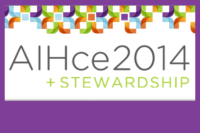2017 will be a particularly challenging year for occupational safety and health program improvement. Here’s why:
- Election cycle: It may take some time for the dust to settle to see where changes are heading. Clearly politics will influence occupational safety and health in some manner.
- Severe injury report program: OSHA sifted through data that began in 2015 for this program.1 OSHA received more than 10,000 severe injury reports in 2015. Onsite inspections were conducted in response to 50 percent of these reports. OSHA will increase outreach in 2017 to get more reports. At least one employer was fined $70,000 for willfully failing to report under this program. An increase in non-reporting fines is expected in 2017 (see below).
- Penalty increase: OSHA’s August 2016 penalty increase (first increase in more than two decades) is reflected in the $536K in penalties proposed in October, 2016, to Mansfield, OH, vehicle parts manufacturer Milark Industries, Inc. Milark has about 150 employees. The $70,000 figure cited in #2 above rises to $124,709 per violation under the new penalty structure.
- Electronic reporting: OSHA’s new requirement to electronically post Form 300A for establishments with 250 or more employees and establishments with 20-249 employees in industries with historically high rates of occupational injuries and illnesses takes effect January 1, 2017.2
- Safety and health program: OSHA released its “Recommended Practices for Safety and Health Programs” in October, 2016.3 ISO draft international standard 45001:2016 - Occupational health and safety management system, published in February, 2016, is generating considerable discussion. Establishments with ISO 9001 (quality) and ISO 14001 (environmental management) programs will be strongly inclined to adopt ISO 45001. The final standard is expected in late 2017.
Run with pack or lone wolf?
All this may not be that daunting if you’re in a large organization with an occupational safety and health staff that share thought process and implementation. But if you are the lone OSH pro, or the non-pro that wears many hats such as HR in a small or medium sized organization, it’s not practical to set any of the above aside for another day because in many ways they are interrelated. You must do them all, at least to some degree – if prevention or reduction of problems is an objective.
Stakeholders
The above developments are nudging you to improve your OSH program. Public disclosure of Form 300A “will be of interest to investors, job seekers, customers, and the broader public” states OSHA. A key emerging issue in ISO 45001 is External Context Issues (Clause 4) that includes “relationships, perceptions & values of external interested parties.” 4
Just starting an OSH program?
OSHA has ten suggestions if you’re being nudged to start an OSH program:
- Set safety and health as a top priority.
- Lead by example.
- Implement a reporting system.
- Provide training.
- Conduct inspections.
- Collect hazard control ideas.
- Implement hazard controls.
- Address emergencies.
- Seek input on workplace changes.
- Make improvements.
OSHA explains these suggestions in its 2016 recommended practices for OSH programs. Which is the simplest to implement? Leading by example seems simple. OSHA says, however, that leading by example includes making safety a part of your daily conversations with workers. Daily conversations on safety may lead to deep-dive discussions, perhaps with controversy, on all types of safety and health concerns. Are you ready for deep-dive OSH conversations; perhaps daily?
Best practices
Among all the online tools that OSHA provides to establish a modern OSH program, success stories5 may be the most beneficial to review. Within the more than 60 stories are practical applications and best practices that organizations undertook to improve their OSH program. You should review these stories and look for common threads that can be applied to your situation.
More support
A common thread found in all success stories is that it takes many helping hands to improve an OSH program. For example, even the most experienced OSH pros don’t see or appreciate every hazard that may cause or contribute to a workplace injury or illness. Illness that often requires expertise to recognize hazards is taking on greater significance. ISO 45001 is being promoted as a global standard because data in 2013 found that approximately 2.34 million people in the world died because of work-related accidents and diseases. Here’s the catch: Two million of these deaths are the result of work-related illness. Don’t be too quick to judge that your workplace is healthy. Most importantly, changing OSH program culture is an all hands-on-deck effort.
Choosing resolutions
At the top of the list of things your boss wants you to focus on in 2017 will be preventing injury or illness. If you can prevent injury or illness nothing else should matter. There’s your top New Year’s resolution. Each annual OSH plan – or New Year’s resolution – is to prioritize solutions to meet this objective.
OSHA’s is correct: Workplaces have changed. Even workplaces that have produced the same goods or services in the same location over many years are different today than in the past. OSH program challenges are more complex today. Greater OSHA involvement with higher penalties and more visibility from external stakeholders are but one of the new challenges.
Nudge your boss for help
You need to nudge your boss – and your boss’s boss – to understand that OSH must be a top priority. OSH program improvement should be among your boss’s New Year’s resolutions, too. Monetary support is important but obtaining more help from people should be a top resolution. Increasing OSH head count is always difficult but it may be a necessity in 2017 or soon thereafter.
References



